This interview compilation comes from the training phase of the OM’s 5th edition. You can have a review of the project here.

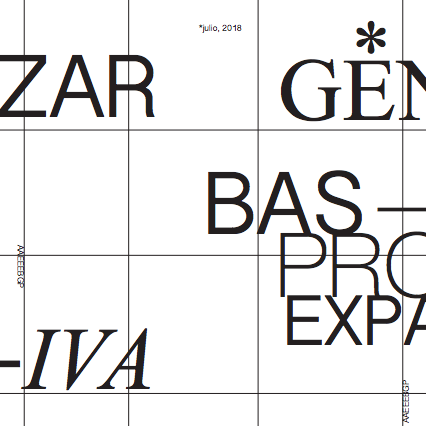
This interview compilation comes from the training phase of the OM’s 5th edition. You can have a review of the project here.
Carles Guerra is an artist, critic and lecturer in Contemporary Art at the Pompeu Fabra University of Barcelona and freelance curator. He was appointed Director of the Primavera Fotogràfica de Catalunya. He was Director of the Virreina Centre de la Imatge, Barcelona, Chief Curator at the Museu d’Art Contemporani de Barcelona (MACBA) from 2011 to 2013, and the director of the Fundació Tàpies since 2015.
Juan Vicente Aliaga is a Spanish art critic who has written widely on contemporary conceptual art as well as on gender and queer theory. He is professor at Polytechnic University of Valencia, correspondent of Artforum, author of some books and he has also been curator at Camden Arts Centre, Museo Reina Sofia, EACC and IVAM.
Pilar Bonet works as a critic and art historian, focused in criticism, art and contemporary design. Bonet is a freelance curator of several historical exhibitions looking at Spanish avant-garde art and many dedicated to contemporary artists. She is also founding member of the Association ACM and the company Arts Coming. She has received numerous prizes and research awards.
Conrado Uribe is an art historian who worked as a curator in citySCREEN (SCREEN festival) and Pabellón Artecámara (feiaArtbo). He was the director of the internation Loop festival, the coordinator of TALKING GALLERIES and he was the curator chief in the Museum of Antioquia.
José Roca is adjunct curator Estrellita B. Brodsky de Arte Latinoamericano (Tate Modern, London) and director of FLORA ars+natura, (Bogotá). For ten years he managed the artistic program of Banco de la República (Bogotá). He was a jury member at 52nd Venice Biennale.
Conrado Uribe is an art historian who worked as a curator in citySCREEN (SCREEN festival) and Pabellón Artecámara (feiaArtbo). He was the director of the internation Loop festival, the coordinator of TALKING GALLERIES and he was the curator chief in the Museum of Antioquia.
Luis Guerra. Artista, teórico y escritor
María Inés Rodríguez is an independent curator and the director of CAPC Musée d´Art Contemporain (Bordeaux) since 2014. She was chief curator at Museo Universitario de Arte Contemporáneo (MUAC, Mexico D.F.) and at Museo de Arte Contemporáneo de Castilla y León (MUSAC).
Maria Hlavajova is the founder and artistic director of BAK Basis Voor Aktuel Kunst (Utrecht) and artistic director of the project FORMER WEST. She was the curator of the roman pavilion for the 54th Venice Biennale and curator of the dutch pavilion for the 52nd Venice Biennale.
Beatrice von Bismarck is a teacher and vice-rector in HGB Hochschule für Grafik und Buchkunst (Leipzig) where she founded and runs an art space, and she is the director of the curatorial project Cultures of the Curatorial. She was in charge of individual expositions at Städel Museum (Frankfurt) and managed XX century department at Städel Kunstinstitut.
Pilar Bonet works as a critic and art historian, focused in criticism, art and contemporary design. Bonet is a freelance curator of several historical exhibitions looking at Spanish avant-garde art and many dedicated to contemporary artists. She is also founding member of the Association ACM and the company Arts Coming. She has received numerous prizes and research awards.
Oriol Fontdevila is a curator, writer, researcher, focusing on art practices and education based in Barcelona. He is the artistic co-director of Sala d’Art Jove. Currently he is researching from a performative approach on the interweave between art and mediation granted by MNCARS, Museo Nacional Reina Sofia and he is co-curating Performing the Museum, an artistic research platform.
Nuria Enguita is co-editor of Afterall magazine and member of the management team of the arteypensamiento program of the Universidad Internacional de Andalucía – UNIA, where she develops the seminar program Narrativas de Fuga, in which Alice Creischer and Eduardo Molinari (Archivo caminante) and Pedro Costa have participated. She also works as a culture consultant for the Basque government. Enguita was part of the curatorial team of the 31st São Paulo Biennial, in 2014, under the direction of the British commissioner Charles Esche. She has also been co-curator of the International Meeting of Medellín, 2011. Among her latest curatorial works is an exhibition by Leonor Antunes for Museu Serralves, Oporto, and Kunstverein Dusseldorf, as well as a retrospective of Lluís Claramunt for MACBA. In addition, in the last two years he has curated exhibitions of Eulàlia Valldosera and Ibon Aranberri for the Reina Sofía National Art Center Museum, Madrid.
Raimundas Malasauskas is a writer and curator who lives and works in Paris. From 1995 to 2006 he was a curator at CAC Vilnius and CAC TV; in 2007 he co-wrote the libretto of an opera, Cellador, which was performed in Paris; in 2007–08 he was a visiting curator at California College of Arts, San Francisco, and from 2007 to 2009 he was also a curator at Artists Space, New York. His writings are concerned with contemporary phenomena, biographies and stories, addressing the parallel worlds of science, media, film, literature, and mass culture.
Orlando Britto holds a degree in Philosophy and Literature, specialized in History of Art, from the University of Granada. Cultural manager, art critic and independent curator of contemporary art projects. He worked from 1989 to 1998 at the Atlantic Center of Modern Art in Las Palmas de Gran Canaria (CAAM), of which he was curator, chief curator and later assistant director. From 2001 to 2008 she directed the Espacio C project, a small and dynamic interdisciplinary and international contemporary art project located in the Cantabrian municipality of Camargo. He has directed and curated various international contemporary art encounters and events in Spain such as the Osorio International Encounters in Gran Canaria, the Diaspora project in the city of Oviedo, or the Nature and Coexistence meeting in the town of Esles de Cayón in the region of Cantabria. In addition, he was the General Curator of the V Bienal de Uppsala in Sweden, in the year 2000, and of the 5th Biennial of Honduras, organized by Mujeres en las Artes Leticia de Oyuela MUA, which took place during the months of May and June 2014 and which was hosted by the Museum for National Identity (MIN), located in the capital of the country, Tegucigalpa.
Anton Vidokle‘s work has been exhibited in shows such as the Venice Biennale, Lyon Biennial, Dakar Biennale, Lodz Biennale, and at Tate Modern, London; Moderna Galerija, Ljubljana; Musée d’art Modern de la Ville de Paris; Museo Carrillo Gil, Mexico City; UCLA Hammer, LA; ICA, Boston; Haus Der Kunst, Munich; P.S.1, New York; among others. With Julieta Aranda, he organized e-flux video rental, which traveled to numerous institutions including Portikus, Frankfurt; KunstWerk, Berlin; Extra City, Antwerp; Carpenter Center, Harvard University, Cambridge, MA; and others. As founding director of e-flux, he has produced projects such as Next Documenta Should Be Curated By An Artist, Do it, Utopia Station poster project, and organized An Image Bank for Everyday Revolutionary Life and Martha Rosler Library. Vidokle initiated research into education as site for artistic practice as co-curator for Manifesta 6, which was canceled. In response to the cancellation, Vidokle set up an independent project in Berlin called Unitednationsplaza—a twelve-month project involving more than a hundred artists, writers, philosophers, and diverse audiences. Located behind a supermarket in East Berlin, UNP’s program featured numerous seminars, lectures, screenings, book presentations and various projects.
Le peuple qui manque is an art curatorial platform based in Paris, France. It was created by Kantuta Quiros and Aliocha Imhoff in 2005, and operates at the intersection of contemporary art and research. Le peuple qui manque is also producing and distributing artists’ films. Some of their recent curatorial projects (2015-2017) are The Trial of Fiction (Nuit Blanche, 2017); A Migrant Constituent Assembly (Centre Pompidou, 2017, symposium-performance); A Government of Times (Leipizg Halle 14, symposium-performance, 2016); A Government of Times (Rebuild Foundation, Chicago, exposition, 2016), La frontera nos cruzó (Museo de la Inmigración Buenos Aires, 2015, exposition); Live Writing, Prague (2015); Post-exotism (New Haven Fort, UK, 2015, exposition), among others.
Valentín Roma is an art historian, writer and exhibition curator. PhD in History of Art and Philosophy from Southampton University (Winchester School of Art). He has been a professor of Contemporary Art Theories at the UAB and full professor at the ELISAVA School in Barcelona. In 2011 he published the book Caras (Peripheral). He was elected director of La Virreina Center de la Imatge, in Barcelona, in April 2016. Prior to this position, in 2014 he became part of the external curatorial team of MACBA, Barcelona, and from the beginning of 2015 until the month of March of that year, he was chief curator of this institution.
Charles Esche is director of Van Abbemuseum, Eindhoven; professor of contemporary art and curating at Central Saint Martins, UAL, London and co-director of Afterall Journal and Books. He teaches on the Exhibition Studies MRes course at CSM, and at Jan van Eyck Academie, Maastricht. Outwith the museum, he co-curated Power and Other Things, Europalia, BOZAR, Brussels, 2017; Art Turns, Word Turns, Museum MACAN, Jakarta, 2017; Le Musée Égaré, Kunsthall Oslo, 2017; Printemps de Septembre, Toulouse 2016; Jakarta Biennale, 2015; 31st São Paulo Bienal, 2014, U3 Triennale, Ljubljana, 2011; RIWAQ Biennale, Palestine, 2007 and 2009; Istanbul Biennale, 2005; Gwangju Biennale, 2002; amongst other international exhibitions. He is chair of CASCO, Utrecht. He received the 2012 Princess Margriet Award and the 2014 CCS Bard College Prize for Curatorial Excellence.
Oriol Fontdevila is a curator, writer, researcher, focusing on art practices and education based in Barcelona. He is the artistic co-director of Sala d’Art Jove. Currently he is researching from a performative approach on the interweave between art and mediation granted by MNCARS, Museo Nacional Reina Sofia and he is co-curating Performing the Museum, an artistic research platform.
Imma Prieto is an art critic, independent curator and professor of contemporary art and new media at the Eram University School of the University of Girona (UdG). Currently, he is part of the Chair of Contemporary Art and Culture of the UdG, and is a member of AICA (International Association of Art Critics) and the IAC (Institute of Contemporary Art). In parallel, Prieto has developed a significant activity in the curatorial field and has curated projects in various exhibition spaces in the national and international field: Temp Art Space in New York, Hirshhorn Museum in Washington, MUCA ROMA Museum in Mexico City, Pumapungo National Museum from Ecuador, Fundació Antoni Tàpies, Fabra i Coats, Bòlit Center d’Art Contemporani, TEA-Tenerife Space for the Arts, ARTIUM and Werkstatt der Kulturen in Berlin, among others.
What, How & for Whom/WHW is a curatorial collective formed in 1999 and based in Zagreb and Berlin. Its members are curators Ivet Ćurlin, Ana Dević, Nataša Ilić and Sabina Sabolović, and designer and publicist Dejan Kršić. WHW organizes a range of production, exhibitions and publishing projects and directs Gallery Nova in Zagreb. Since its first exhibition titled What, How & for Whom, on the occasion of 152nd anniversary of the Communist Manifesto, that took place in Zagreb in 2000, WHW curated numerous international projects, among which are Collective Creativity, Kunsthalle Fridericianum, Kassel, 2005; 11th Istanbul Biennial What Keeps Mankind Alive?, Istanbul, 2009; One Needs to Live Self-Confidently…Watching, Croatian pavilion at 54th Venice Biennial, 2011. Recent projects by WHW include the festival Meeting Points 7 that took place in Zagreb, Antwerp, Cairo, Hong-Kong, Beirut, Vienna and Moscow under title Ten thousand wiles and a hundred thousand tricks in 2013 and 2014, exhibition Really Useful Knowledge, Museo Nacional Centro de Arte Reina Sofia, Madrid, 2014, among others.
José Miguel G. Cortés is PhD in Philosohy and has been professor of Art Theories at the Faculty of Arts of the University of Valencia. He has also been director of the Espai d’Art Contemporani de Castelló (EACC) from 1998 to 2003. Within his work as curator, he has curated different exhibitions: Micropolíticas. Arte y Cotidianidad 2001-1968; Contra la Arquitectura: La necesidad de (re)construir la ciudad; Lugares de la Memoria; Ciudades Invisibles; Héroes Caídos: Masculinidad y Representación, among others; and also solo exhibitions for artists such as Jeff Wall, Pepe Espaliú, Gilbert & George or Christian Boltanski, among others. He leads the IVAM, Valencia, since 2014.
Manuel Segade has a degree in Art History from the University of Santiago de Compostela. Since 1998 he has been working on fragments of a cultural history of aesthetic practices of the late nineteenth century, around the production of a somatic and sexualized subjectivity, about what he wrote the essay “Narciso fin de siglo” (Melusina, 2008). During 2005 and 2006, he was the content coordinator of Metrònom Fundació Rafael Tous d’Art Contemporani de Barcelona. Between 2007 and 2009 he was a curator at the Galician Center for Contemporary Art in Santiago de Compostela. As of 2009, he resumed his work as an independent curator, carrying out projects for La Casa Encendida, ARCO, MUSAC, Center d’Art La Panera or the Centro de Arte Dos de Mayo. Since December 2015 he leads the latter center, in Móstoles.
Lars Bang Larsen is a writer, curator and art historian. He is a visiting professor at the High School of Art and Design in Geneva and a postdoctoral researcher at the University of Copenhagen (Department of Arts and Cultural Studies), where he received his doctorate for his study on psychedelic concepts of the art of the neo-avant-garde. He has organized exhibitions such as A History of Irritated Material (Raven Row, London, 2010), Reflections from Damaged Life (Raven Row, London, 2013) and The Society Without Qualities (Tensta Konsthall, Stockholm, 2013). Among the exhibitions of which he was co-curator, stand out The invisible insurrection of a million minds (Sala Rekalde, Bilbao, 2005), Populism (Stedelijk Museum, Frankfurter Kunstverein and other institutions, 2005), Believe Not Every Spirit, But Try the Spirits (MUMA, Melbourne, 2015) and Georgiana Houghton: Spirit Drawings (Courtauld Gallery, London, 2016). He was a co-curator of Incerteza viva, the 32nd São Paulo Biennial, 2016, and curator of the Danish participation in the 26th edition, 2004. He is a regular contributor to magazines such as Afterall, Artforum and Frieze.
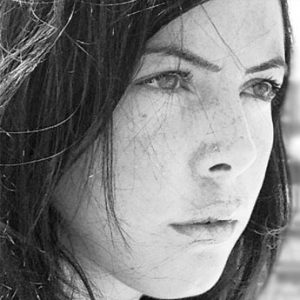
Diana Padrón (web)
Researcher and independent curator. Coordinator of the first three editions of ON MEDIATION (2013/2014, 2014/2015, 2015/2016). Co-curator of the exhibition “Menos es más”, exhibition project for the first edition of the seminar.
Diana Padrón has a degree in Art History by the University of La Laguna (2010). She received her postgraduate degree at the M.A. Advanced Studies of Art History, University of Barcelona with the thesis Cartographic practices antagonist in the Global Era (2011), which was presented as a lecture at the international seminar QUAM 2011 Wikpolis, Cartographies and collective constructions of the social space, organized by the University of Vic and ACVIC Centre of Contemporary Art.
She has given conferences and teaching sessions for University of Barcelona, Escola EINA, Arts Santa Monica, University of Vic and Universität für Musik und Darstellende Kunst Wien. She collaborates with contemporary art journals such as SalonKritik, Interartive, A*Desk and REG|AC (Journal of Global Studies and Contemporary Art). She works as an independent curator, directing various exhibition projects such as Perder el Norte initiative. She has participated in seminars about contemporary thought organized by different centers and international institutions, where she has received teaching by Jacques Rancière, Giorgio Agamben, Walter Mignolo and George Didi-Huberman, inter alia.
 Pilar Bonet (web)
Pilar Bonet (web)
Historian and art critic, lecturer, curator and writer.
Pilar Bonet works as a critic and art historian, focused on critical art and contemporary design. Bonet is an independent curator of several exhibitions dedicated to Spanish historical avant-garde art and dedicated to contemporary artists. He is also a founding member of the ACM Association and the Arts Coming organization. He has received numerous prizes and research awards.
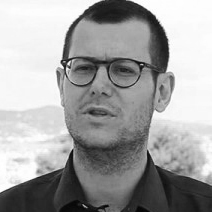 Oriol Fontdevila (web)
Oriol Fontdevila (web)
Independent curator, writer and researcher.
Oriol Fontdevila is a curator, writer and researcher, focused on artistic practices and education in Barcelona. He is the artistic co-director of Sala d’Art Jove. She is currently researching from a performative approach the interweaving between art and mediation given by the MNCARS, Reina Sofia National Museum and co-curing Performing the Museum, a platform for artistic research.
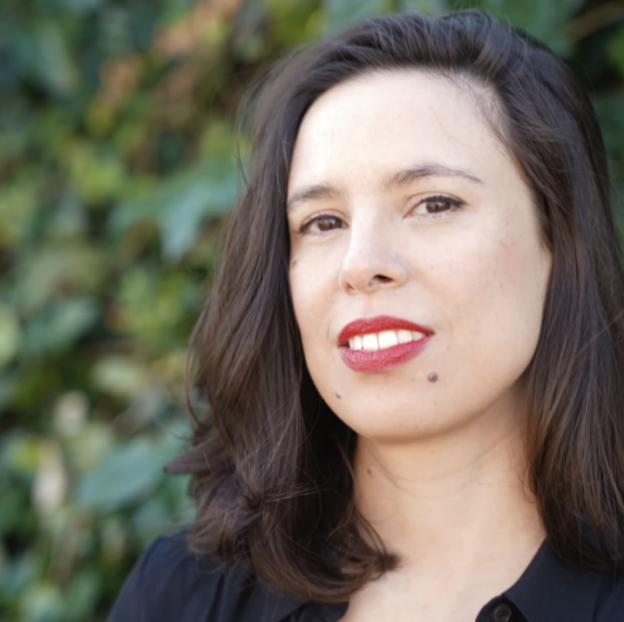
The interdisciplinary work of Julia Ramírez-Blanco (Juan de la Cierva-Incorporación scholar, Barcelona University) connects art history, utopian studies, and activist movements. She has conducted research on the political iconography of social movements, with a focus on the British direct-action environmentalism of the 1990s and the Spanish 15M movement that occupied city squares with activist camps in 2011. She has also written on the relationships between contemporary art and utopia, and on the gendered history of artistic collectives.
Her research frames utopia as the backbone of politics, which condenses its vision in an idealized whole. Her work understands performative, symbolic, and visual elements as a privileged space in which the utopian discourse is developed. She has published internationally and is the sole author of three monographs – Artistic Utopias of Revolt (Palgrave, 2018), 15M. El tiempo de las plazas (Alianza, 2021), and Amigos, disfraces y comunas (Cátedra, forthcoming, 2022) – and editor of two books and a journal issue. She has authored articles and chapters in English, French, Italian, and Spanish. As well as conducting research stays in New York, Nantes, Amiens, and Princeton, she is a committee member of the Utopian Studies Society and belongs to the Intentional Communities Research Group. She now co-leads the work and research group Aesthetics & Technics (Civic Media Lab, American University Paris), and collaborates with the C4AA. She also has co-led the research and exhibition project Grande Révolution Domèstique-Guise on feminist utopias. She has amply collaborated with the Museum of Contemporary Art of Barcelona (MACBA) and has curated the of the 15M materials for the recent reorganization of the permanent collection of the Reina Sofia Museum in Madrid. At present, she is working on a book on back-to-the-land communities as part of a broader project on the transversal history of artistic collectives and ecological utopias in the face of the climate crisis.
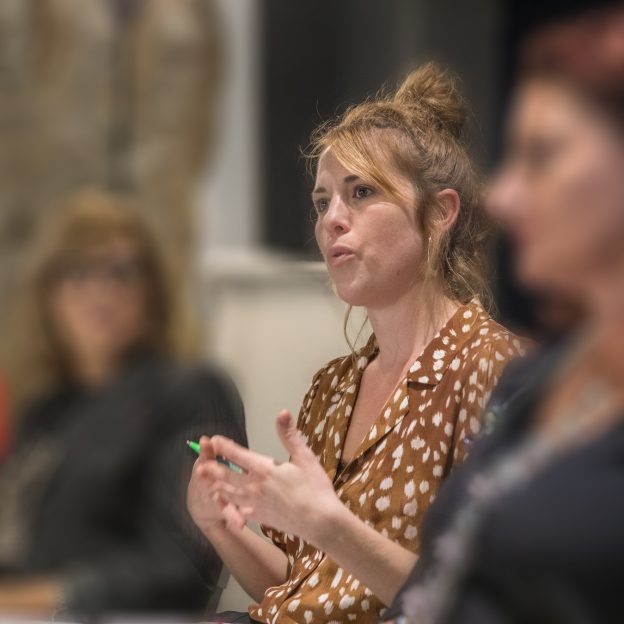
Independent curator, writer and cultural manager based in Barcelona. Graduated in Fine Arts at the University of Barcelona (UB), she finished her studies at the University of West England, Faculty of Arts, Media and Design in Bristol. In 2010 she obtained her Master degree in Management and Design of Exhibitions at the European University of Madrid (UEM), where later on she worked as an exhibition coordinator at different Cultural Management enterprises. She has been attending several seminars, courses and residencies about Curatorial Studies such as ICI (Independent Curators International), New York, the Internationale Sommerakademie für Bildende Kunst, Salzburg, or Node Center for Curatorial Studies, in Berlin, where she curated and participated in diverse exhibitions and artistic projects. Olga Sureda is author of several essays about Curatorial Practices and Contemporary Art published in different countries, such as Philippines, France, U.S,Portugal and Spain.
Olga is part of the research group of the platform Global Art Archive, she is one of the coordinators of the training seminar ON MEDIATION_Theory and Curatorial Practices in the Global Art organized by the research Group Art Globalisation Interculturailty (AGI), at the University of Barcelona, and she is the co-founder of Nectar, a rural co-working & co-living at northeastern of Catalonia.
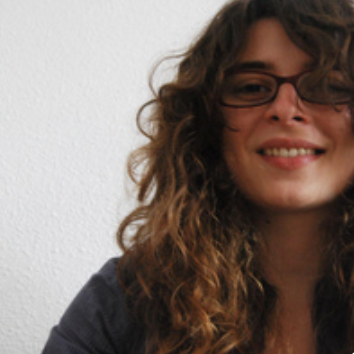
Artist and researcher at the Universitat Politècnica de València, Chiara studies the confluences between collaborative processes and art linked to ecosocial issues in the contemporary scene. She holds a PhD in Fine Arts and has been a visiting scholar at the Center for Creative Ecologies at the University of California, Santa Cruz (USA). In addition to her academic activity, she develops artistic and cultural management projects related to socio-environmental issues. Her work has been exhibited in international exhibitions and she has participated in artistic residencies linked to ecologically focused art such as The Shifting Place at the Pistoletto Foundation (Italy, 2016), Atlante Energetico at the Spinola Banna Foundation (Italy, 2016-17), Bloom Again (Greece, 2017), New Curriculum (Asturias, Spain, 2018) and Resistències Artístiques (Valencia, Spain, 2019-2021).
Her projects arise from context-based collaborative research and develop around metaphors of complexity and interdependence. Considering art as a fertile ground for the hybridization of different knowledge systems, she attempt to raise questions about contemporary eco-social issues, especially in relation to agriculture, land use and food sovereignty.
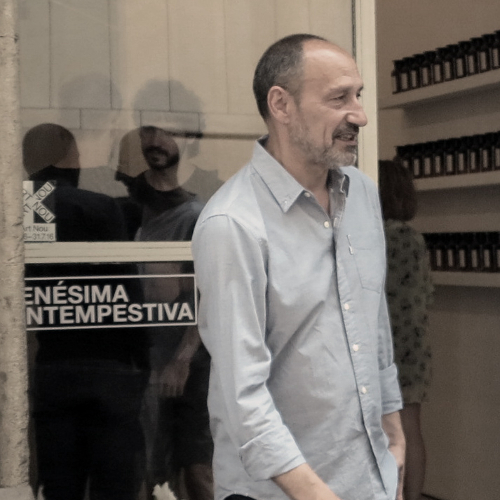
Mataró, 1961. Martí Peran is a faculty member of the University of Barcelona as well as a critic and curator. He has collaborated with many contemporary art books and catalogues. He was a member of the editorial board of “Transversal” (1996-2002). Member of the editors team of “Roulotte”, he is also a collaborator in newspapers and art magazines (Exit Express, Artforum International). He has imparted different workshops on art criticism and curatorial practices in different institutions. He has lectured in different museums and universities (MACBA, Barcelona; MNCARS, Madrid; USP, Sao Paulo; Trienale, Milano; CCEBA, Buenos Aires; Townhouse, Cairo; Contemporary Art Center, Larissa; NYU, New York; Art Beijing; Jeu de Paume, Paris and more).
He has curated several historical and contemporary art exhibitions. He has recently curated “Event architecture” (EACC, Castellón,2002); “Stand by. Listos para actuar” (Laboratorio Alameda, Mexico City,2003); “Corner” (Cajamadrid, Barcelona, 2004-2005); “See how they move. 4 ideas about mobility” (Fundación Telefónica Madrid, 2005); “Glaskultur. What happened with transparence idea?” (Koldo Mitxelena, San Sebastián, 2006). “Post-it city. Occasional Cities” (CCCB, Barcelona, 2008; 2009-2011: Santiago de Chile, Sao Paulo, Buenos Aires, Montevideo, Cádiz, Madrid); “After Architecture” (Arts Santa Mònica. Barcelona,2009), “Para Bellum 12mm” (Mataró, Barcelona); “Esto no es un museo. Artefactos móviles al acecho” (Can Xalant y ACVIC, Barcelona, 2011); y “Estilo indirecto” (Fundación Foto Colectania, Barcelona, 2011 y Bolit, Girona, 2012). He was the director of “Roundabout Program” (2001-2008), an exchange program between Barcelona and other cities (Santiago de Chile, Istambul, Jerusalem, Rejkiavic, Bangkok, Mexico D.F.).
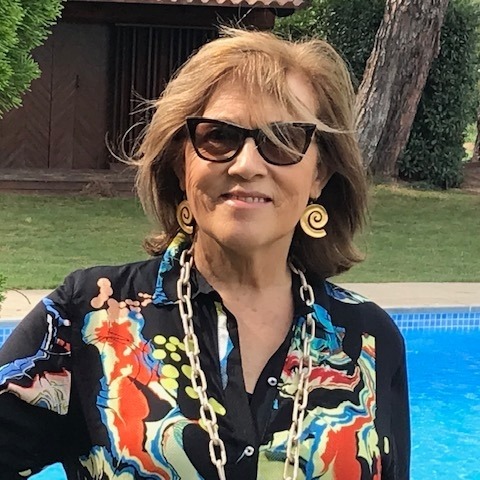
1953, Barcelona. Anna Maria Guasch is Professor of the Department of Contemporary Art History at the University of Barcelona. She has also been a teacher at the Universities of Seville and Complutense Madrid.
In the last fifteen years, Guasch has focused on the study of international art from the second half of the 20th Century and wrote The Art of the 20th Century: from the Second World War to Our Times (Espasa Calpe, Madrid, 1996), and has analyzed the expositions it has generated. This line of investigation has lead to publications The Art of the 20th Century and Its Exhibitions: 1945-1995 (Serbal Editions, Barcelona, 1997; expanded second edition, 2009), awarded with the Premi Espais to the Art Criticism (1998); and The Manifestos of Postmodern Art: Texts of Expositions 1980-1995 (Akal/Arte Contemporáneo, Madrid, 2000) with contributions by C. Joachimides, D. Kuspit, A. Bonito Oliva, K. Power, D. Crimp, H. Foster, T. Crow, H. Szeemann, C. David, J.H. Martin y T. McEvilley, among others.
Recent investigations analyze the intersection of the artistic scenes of the 20th and 21st centuries, a theme elaborated in the book The Last Art of the 20th Century: From Postminimalism to Multiculturalism: 1968-1995 (Alianza Forma, Madrid, 2000), while in terms of the theory of criticism, her notable works include Art Criticism: Theory and Praxis ( Barcelona, Serbal, 2003), Criticism in Dialogue: Interviews About Art and Contemporary Thinking (Murcia, Cendeac, 2006 and 2008), Discrepant Dialogues in Art Criticism (2000-2011) and Formal, Textual and (Con) textual Art Criticism (in press). Guasch has co-edited Learning from the Bilbao Guggenheim (University of Nevada, Reno, 2007) and Aprendiendo del Guggenheim Bilbao (Akal/Arte Contemporáneo, Madrid, 2007) written with Joseba Zulaika.
Currently, Guasch focuses her investigations on three areas: Archiving – Memory and Contemporary Art, Art History and Visual Studies, and Contemporary Art and Globalization. The first of these foci was developed and exhibited in “The Places of Memory: The Art of Archiving and Remembering,” (Materia. Magazine of the Art History Department of the University of Barcelona, May, 2005). Visual Autobiographies: Between the Archive and the Index (Siruela, Madrid, 2009), and Art and Archive: Genealogies, Typologies, and Discontinuities (Madrid, Akal/Arte Contemporáneo, 2011), and in presentations at conferences of related sciences such as the 20th ANPAP Meeting (Rio de Janeiro, 2011) in which she presented Contemporary Archival Practices: Between the Domestic and the Public, Memory and History, Global and Local.
Within the field of Art History and Visual Studies, Guasch has produced the chapter “Twelve Rules for a New Academy: The ‘New Art History’ and Visual Studies,” in Visual Studies: The Epistemology of Visuality in the Era of Globalization (José Luis Brea, ed., Akal, Madrid, 2005) and her contribution to the Stone Summer Theory Institute, Farewell to Visual Studies, (James Elkins, dir., Chicago, 2011).
In her research on Contemporary Art and Globalization, her noteworthy contributions to international conferences and seminars include From Here: Context and Internationalization presented at the 3rd Summit of Critics and Investigators (Valparaiso, Chile, 2011) and her invitation to the international conferences Refocusing on Issuers: Ink Painting through a Perspective of Art History (Shanghai, May 2012) and Art, Criticism and the Forces of Globalization (Winchester School of Art / University of Southhampton and Tate, Liverpool, September 2012). Concerning the theme generally, her notable work includes the text The Global Effect: Art in the Era of Mobility, Translation, and Memory (in press) and her commission at the exposition The Memory of the Other in the Global Era in Bogota, Colombia (2009), Santiago, Chile (2010), and Havana, Cuba (2011).
Between 2000 and 2011, Guasch has been a Visiting Fellow in the Universities of Princeton, Yale, Columbia, San Diego, and The School of the Art Institute of Chicago. In 2002, she was a Visiting Scholar at the Getty Research Institute in Los Angeles and completed her research residency in 2008. She has taught seminars and courses at many institutions including the Pontificia Catholic University of Chile (2002), Esmeralda Institute of Fine Arts (Mexico City, 2003), and San Antonio School of Cinema of Los Baños, (Havana, Cuba, 2005), as well as the Universities of Antioquia (Medellin) and the Bogota National University (Colombia, 2004, 2006, 2007) and at the University of Nuevo León (Monterrey, Mexico, 2006).
Guasch’s academic footprint in the Department of Art History at the University of Barcelona includes directing fifteen (15) doctorate theses while fulfilling her duties as a researcher and mentoring bachelors and masters degree candidates. She also guides students externally as a tutor of doctorate theses in universities across Mexico, Colombia, and Chile. Since 2007 she has been the Project Director of Critical Cartography of Art and Visuality in the Global Age: New Methodologies, Concepts, and Analytic Scopes in which members from Spanish and International universities participate. (www.culturasvisualesglobales.net).
Guasch directs and coordinates Global Art Archive, a research group that studies archives and their role as a liaison between collective memory and individual development (www.globalartarchive.com). In addition, she is part of the London-based international study Visual Culture Studies in Europe, the Humanities in the European Research Area (HERA), and Zahia Rhamani’s Art et mondialisation (Art and Globalization) research group in Paris (INHA). Along with Marquard Smith and Joaquín Barriendos, she organized the international congress Visualizing Europe – The Geopolitical and Intercultural Boundaries of Visual Culture (University of Barcelona, 2011) and has participated in Third International Workshop on Art Criticism (Madrid-Ciudad Real 2011).
Since 1975, Anna Maria has worked relentlessly as a critic of art in numerous national and international publications. In addition, she directs Akal/Arte Contemporáneo, which among its several texts has edited the Spanish translations of the following texts:
Donald B. Kuspit, Signs of Psyche in Modern and Postmodern Art; Rosalind Krauss, Passages in Modern Sculpture; Thomas E. Crow, Modern Art in the Common Culture; Brian Wallis (ed.), Art After Modernism: Rethinking Representation; Robert C. Morgan, Art Into Ideas: Essays on Conceptual Art; Lucy Lippard, Six Years: The Dematerialization of the Art Object; Hal Foster, The Return of the Real: The Avante-Garde at the End of the Century; Donald Kuspit, The End of Art; Arthur Danto, Beyond the Brillo Box: The Visual Arts in Post-Historical Perspective; Benjamin B. Buchloh, Formalism and Historicity: Models and Methods in Twentieth Century Art; Douglas Crimp, Critical Positions: Essays on the Politics of Art and Identity; Hal Foster, Prosthetic Gods; Thomas McEvilley, On the Rupture of the “Cul de Sac”. Art in the Second Half of the Twentieth Century; Beatriz Colomina, Double Exposure: Architecture through Art; Sèrge Guilbaut, Mirror Images on the Brink of the 21st Century.
Some of Akal/Arte Contemporáneo’s noteworthy publications include: Juan Vicente Aliaga, Phallic Order – Androcentrism and Gender Violence in Art Practices of the 20th Century; Pilar Parcerisas, Poetic, Political, and Peripheral Conceptualism(s); Javier Maderuelo, The Concept of Space in Contemporary Architecture and Art, 1960-1989; Juan Antonio Ramírez, The Object and The Aura – The (Dis)order of Modern art; José Miguel G. Cortés, The Captive City – Control and Patrol in the Urban Space; Juan Martín Prada, Artistic Practices and Internet in the Era of Social Networks (in press).
Art and Archive: 1920-2010. Genealogy, Tipologies and discontinuity
Roots & Routes. Research on Visual Culture
Periodico Trimestrale/Quarterly Magazine,
Año I, nº 3, Julio-septiembre 2011 (ISSN 20309-5426)
Cartografías de lo global: memorias y lugares
Arte e Sociedade, Lisboa, 2011, pp. 322-336